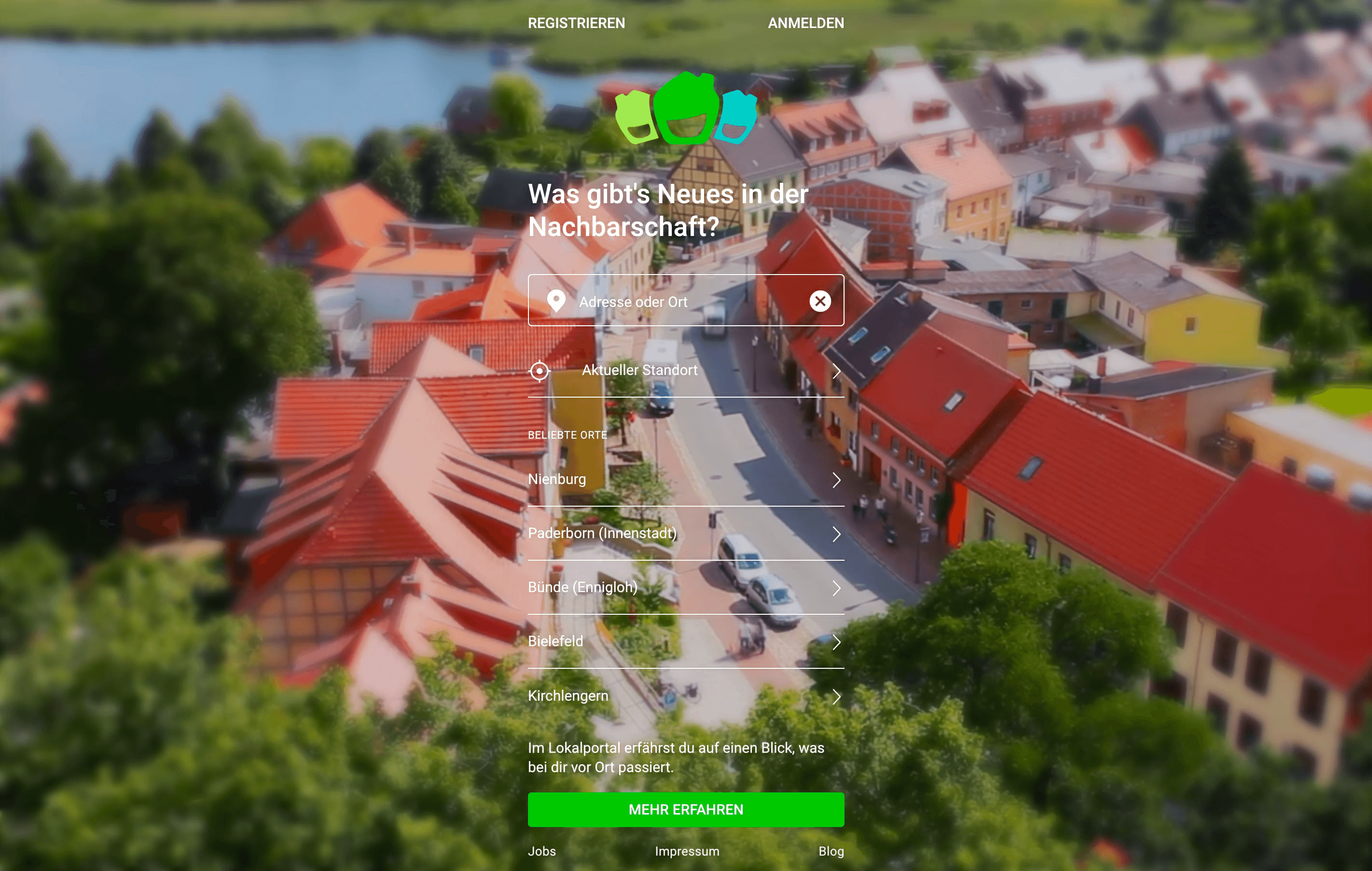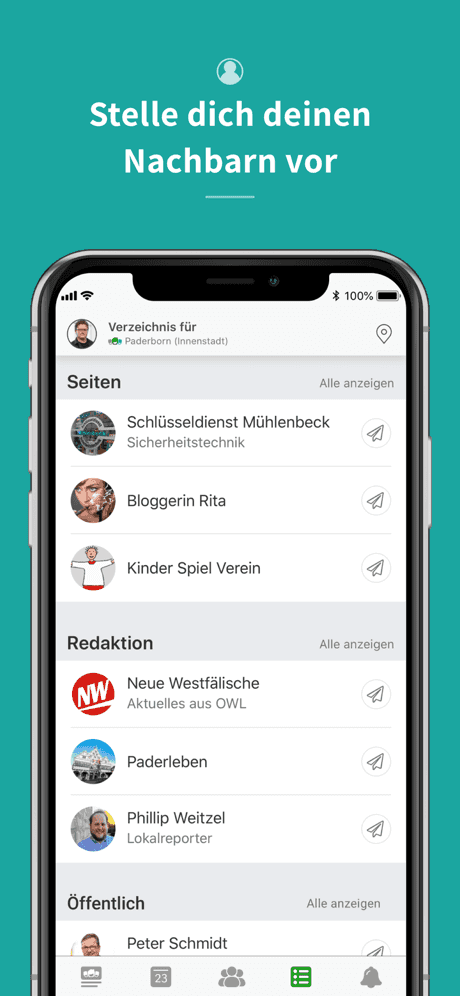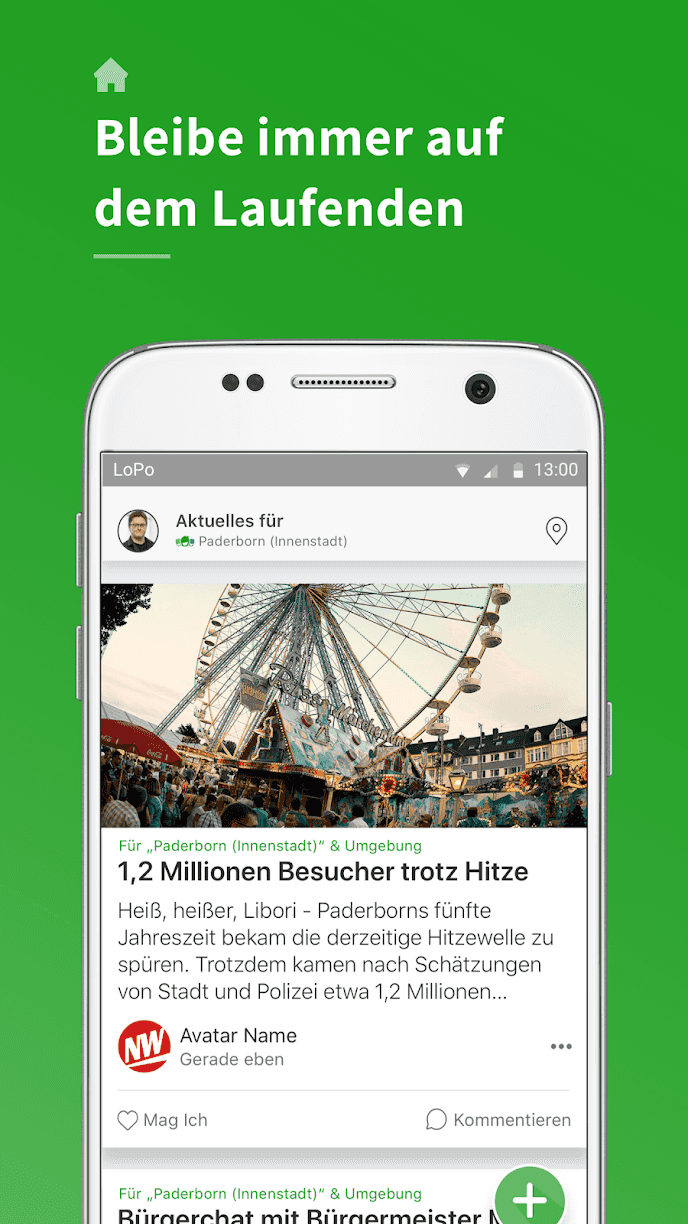Lokalportal was born with a mission to be the future of local journalism in Germany. If you haven’t lived there you might not know how strongly people are connected to their neighbourhoods and activities like weekly food markets, theatres, flea markets etc. Most of the neighbourhoods have their small newspapers, keeping them updated on what is going on around and as well providing a platform where officials like the police can communicate with residents.
Lokalportal raises those old newspapers to a new level preparing them for the digital future. For the first time, residents can connect in their neighbourhoods, talk to each other, organize events, share news and pictures. A friendly local social network.
Challenges
Lokalportal has a big mission, which is reflected in the number of features their app has to support. They were looking for helping hands with experience in React Native to support their team. The app was developed by full-time employees and some, frequently changing, freelancers. The main challenges were:
- a rapidly evolving app which needed many new features
- constantly changing team where freelancers don’t get enough time to get a deep knowledge of how the app is built
- additionally, we quickly noticed that the company was losing precious development time and money in some inefficiently implemented agile processes
Process
We were working together for 18 months, so it is impossible to mention everything we’ve done during this time, but I would like to point out some bigger changes.
Agile process
We started with the lengthy agile processes. The first thing to do when you optimize performance is to measure. So we did measure. Every team meeting was accounted for. Once we had those numbers we hijacked (a tad 😇) the role of the scrum master for the team. We applied time limits for the meetings’ length, made sure they start on time, and that everybody was coming prepared. Everything possible to prevent wasting each other's and the client's company time.
One of the very positive changes that we've introduced was a daily practice of writing down notes for the retrospective. This has replaced the previous, mostly failing, hectic attempts to remember what happened in the last 2 weeks during the actual retrospective meeting.
This allowed us to efficiently capture team's existing issues in order to improve them. Of course, sparkling everything with a big dose of positivity to enhance productivity and team bonding.
Once our goals were achieved and the processes became self-sustained we withdraw from the role and took off the Scrum Master hat. Now everybody is in charge of keeping the work process nice, smooth, and efficient.
Put compiler to work for us
How did we address the architecture problem? If you have people joining and leaving the team regularly how do you keep your app resilient to unwanted changes? How do you add features quickly?
If a developer wants to understand quickly how the app works and what to change to implement a new feature, they have to know the flow of the data and state in the app. We went an extra mile to make sure there is only one source of truth for the app state, and that every change of state happens exactly the same way. To achieve this the app got a new redux setup, with very strict types. It's not possible anymore to dispatch an unknown action with an unsupported payload. The developers get instant feedback on what payload has to be handled for which action type in reducers and the resulting state is always as described in the store branch. And the best of all is that all that is enforced by the tireless compiler. This way while reviewing code we can focus on business logic and leave code coherence to the best-suited coding partner, the compiler.
Asynchronous architecture
Another place where we introduced strict patterns and types were asynchronous actions. Previously, a bit confusing combination of promises and action dispatching, where without reading code you were not sure how your code would get a successful or failure response delivered, was transferred into redux-observable, with strictly defined inputs and outputs. Redux-observable may not be for every team, so it can be easily transformed into redux-sagas, if you wish to do so.
Code review best practice
Code changes can only become part of the application if they are reviewed and accepted. So we have improved the review process as well. We made it easy to follow which merge requests are stuck, which need attention, and who is the person responsible for moving the process forward. These things are easily handled if you have a small team, but a bigger team, especially with often changing personnel, needs stricter rules to keep the forward pace. We've also managed to remove any code styling discussions out of the scope of the reviews altogether by handling it over to prettier and eslint.
Improving testing setup
Having a setup where the compiler can save you a lot of time is one thing, but empowering the team to be able to focus on the most important things, like business logic, and not lose time on things which can be automated is another thing altogether. At the end of the review process, somebody has to test the app if everything works fine. In Lokalportal the team was responsible for doing that. We wanted to have as many automated tests as possible, so that every merge request can be approved swiftly.
But the quality of the software doesn’t scale linearly with the number of tests and it’s really easy to slow down the development process by writing the wrong tests. We shared as much as possible of our knowledge based on years-long experience and certifications like ISTQB. We’ve also refactored pre-existing tests to make them more resilient and easier to understand, as well as separated unit tests from functional and integration ones, so the most important tests can be run as often and quickly as possible.
Results
It was an exciting year and a half of working together. We’ve managed to create a flexible and yet fail-proof architecture, which was put to test when more junior developers joined the team. Even a junior developer was able to understand, be productive and independently work on new features in a matter of weeks.
The improved agile process was saving around 10-20 developer-hours every two-week sprint when the team was small and it would consistently save even more when the team grew.
And as a cherry on top, by improving tests set up, we've cut down detox running time by half, from ~40 down to ~15 minutes. 🍒🎂
Everyone has learned a lot from this project, and so have we 💪 A mutual growth opportunity and partnership is what Brains & Beards is all about 🙇♂️






